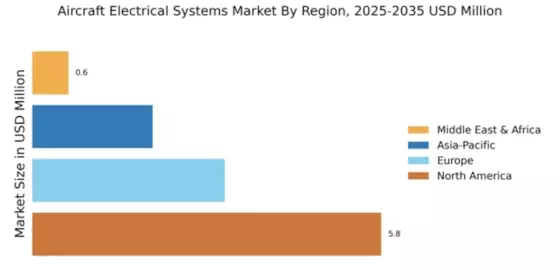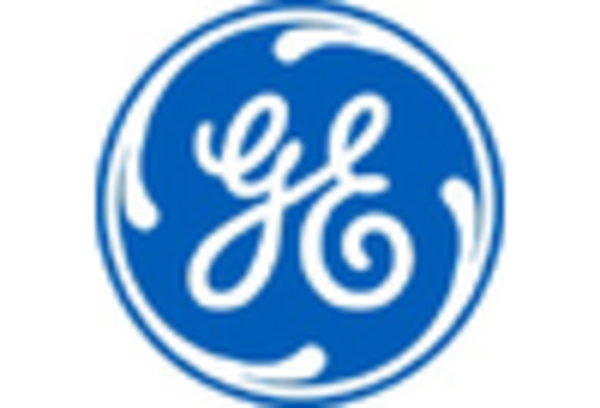The Aircraft Electrical Systems Market is currently characterized by a dynamic competitive landscape, driven by technological advancements and increasing demand for efficient and reliable electrical systems in aviation. Key players such as Honeywell (US), General Electric (US), and Thales (FR) are strategically positioned to leverage innovation and partnerships to enhance their market presence. Honeywell (US) focuses on integrating advanced technologies into its electrical systems, while General Electric (US) emphasizes digital transformation and sustainability in its operations. Thales (FR) is actively pursuing collaborations to expand its product offerings, thereby shaping a competitive environment that prioritizes technological superiority and operational efficiency.
In terms of business tactics, companies are increasingly localizing manufacturing and optimizing supply chains to enhance responsiveness to market demands. The market structure appears moderately fragmented, with several key players exerting considerable influence. This fragmentation allows for a diverse range of products and services, fostering competition that drives innovation and efficiency across the sector.
In November 2025, Honeywell (US) announced a strategic partnership with a leading aerospace manufacturer to develop next-generation electrical systems aimed at reducing weight and improving energy efficiency. This collaboration is expected to enhance Honeywell's competitive edge by integrating cutting-edge technologies into its offerings, thereby addressing the growing demand for sustainable aviation solutions. The partnership signifies a shift towards collaborative innovation in the industry, potentially setting new benchmarks for performance and efficiency.
In October 2025, General Electric (US) unveiled its latest digital platform designed to optimize aircraft electrical systems through real-time data analytics. This initiative is pivotal as it aligns with the industry's increasing focus on digitalization and predictive maintenance, allowing operators to enhance operational reliability and reduce downtime. By harnessing data-driven insights, General Electric (US) positions itself as a leader in the digital transformation of aircraft systems, which could redefine maintenance practices in the sector.
In September 2025, Thales (FR) expanded its product line by launching a new suite of electrical systems tailored for electric and hybrid aircraft. This move not only reflects Thales's commitment to sustainability but also addresses the emerging market for environmentally friendly aviation solutions. By diversifying its offerings, Thales (FR) is likely to capture a significant share of the growing demand for innovative electrical systems that support the transition to greener aviation technologies.
As of December 2025, the competitive trends in the Aircraft Electrical Systems Market are increasingly defined by digitalization, sustainability, and the integration of artificial intelligence. Strategic alliances among key players are shaping the landscape, fostering innovation and enhancing product offerings. The shift from price-based competition to a focus on technological advancement and supply chain reliability is evident, suggesting that future competitive differentiation will hinge on the ability to innovate and adapt to evolving market demands.


















Leave a Comment